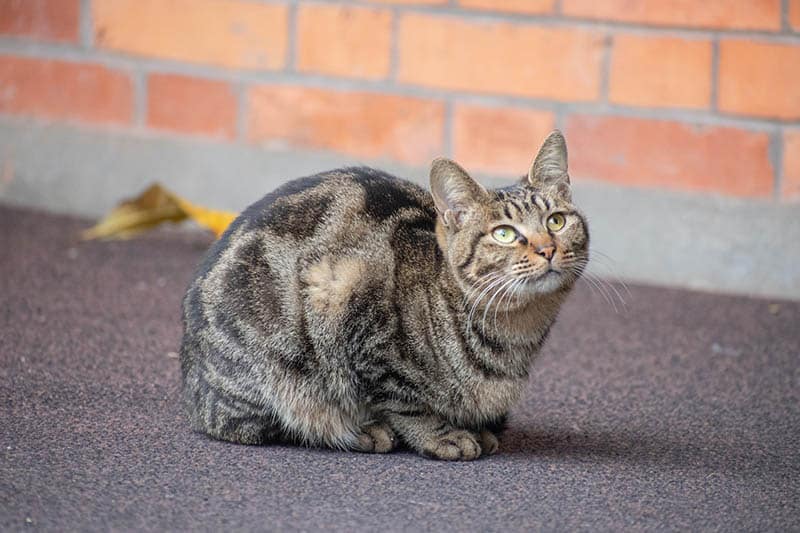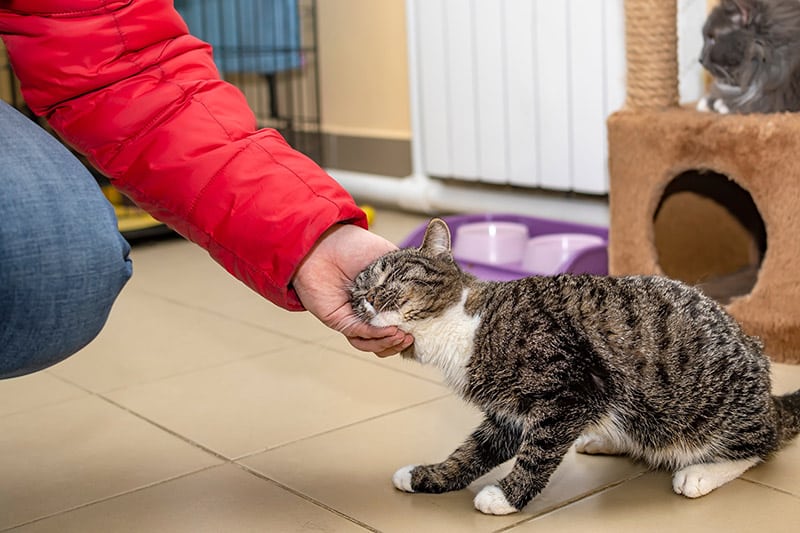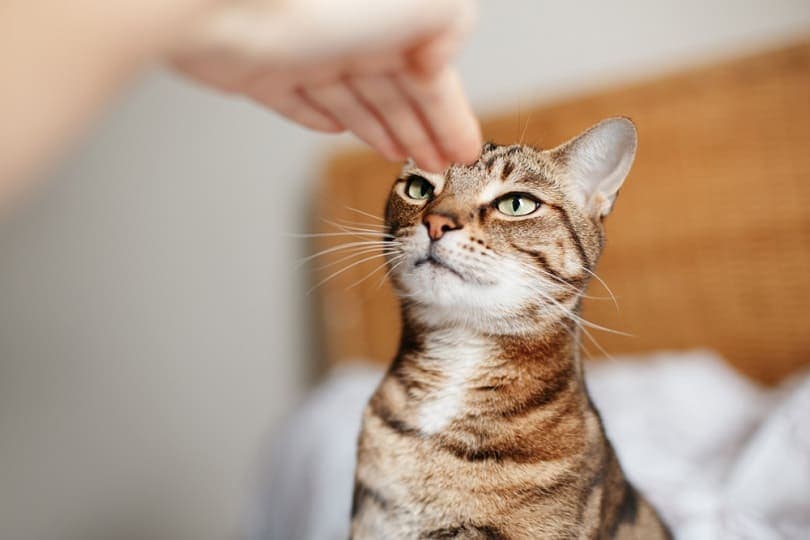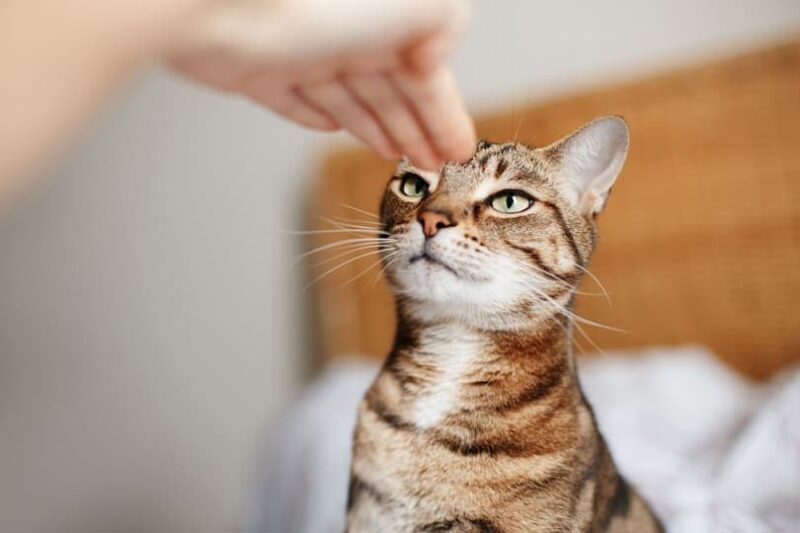Whether you’re meeting a new cat you’re hoping to bring home or introducing yourself to a friend’s cat, first impressions matter. Cats tend to be more reserved than, say, a Golden Retriever, but showing them respect and earning their affection is worth the extra effort.
Here are seven tips to introduce yourself to a new cat and get off on the right foot.

The 7 Tips on How to Introduce Yourself to a Cat
1. Ask for Permission
If you know the owner of the cat or you’re meeting a shelter cat, ask about their temperament. The owner or shelter staff can offer tips on the best way to interact with the cat based on their experience.
Otherwise, cats prefer a calm presence when you approach them. Avoid any sudden movements, loud noises, or behaviors that may make the cat feel trapped. They should have space to move away and interact with you on their own terms.
2. Don’t Stare

For cats, eye contact and staring are signs of aggression. You can glance at the cat and look away to make them feel more comfortable. Cats respond well to long, slow blinks that indicate that you mean them no harm.
3. Let the Cat Come the Rest of the Way
Being too forceful when interacting with a cat for the first time is a turnoff. Take things slowly when you approach, but don’t go the whole way. Be open and allow the cat to come the rest of the way to you, rather than moving toward them or reaching for them.
4. Crouch Down

Cats are small, so looming over them can feel threatening. Crouch down to get on the cat’s level and extend your hand for the cat to smell. Don’t force the cat to be touched. Let them smell you and investigate, then come closer to rub against you if they feel comfortable.
5. Keep Your Hand in the Right Position
You want to avoid reaching over the cat and petting them on the head or the back, even if they have just smelled your hand. The cat might be scared seeing your hand come down to them. Some cats have past trauma, and reaching over them might trigger that.
Keep your hand low in front of them and your palm up. Once the cat smells one side of your hand, slowly turn it over so they can sniff the other side. Allowing the cat to do this will help them feel safer as they have had time to investigate you.
6. Wait to Start Petting the Cat
If the cat starts rubbing against you, staying close, or purring, you can try to pet them. Cats can be particular about where you touch them, but many like their necks and backs petted. Don’t expect a cat to be comfortable with “off-limits” areas like their belly or tail at first.
7. Again, Don’t Force the Cat

You’re off to a good start if the cat is enjoying being petted and purring, so don’t push it. If the cat seems to disengage from the interaction, allow them to get away. If you notice signs of discomfort, such as flattening or twitching of the ears or pupils widening, back off a little. If you continue to push it, the cat may lash out by swatting, hissing, biting, or scratching.

Enjoy Your New Friendship
Whether they’re meeting new cats or new people, cats are more reserved in their interactions than dogs. Taking it slow with cats and respecting their boundaries are the best ways to make them feel safe and secure to reciprocate the affection.
Featured Image Credit: Anna Kraynova, Shutterstock









